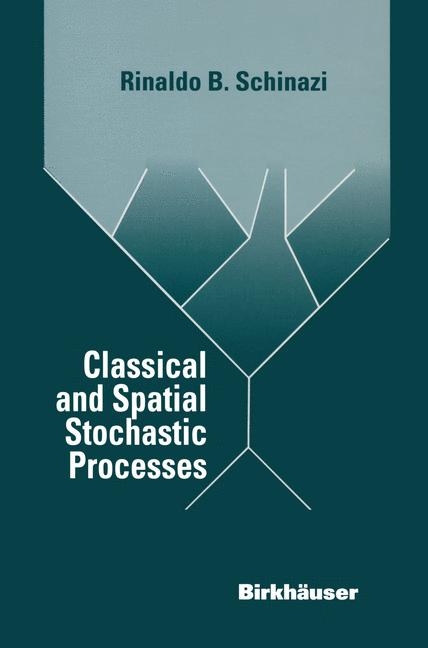
Classical and Spatial Stochastic Processes
Birkhauser Boston Inc (Verlag)
978-0-8176-4081-1 (ISBN)
- Titel ist leider vergriffen;
keine Neuauflage - Artikel merken
This book is intended as a text for a first course in stochastic processes at the upper undergraduate or graduate levels, assuming only that the reader has had a serious calculus course-advanced calculus would even be better-as well as a first course in probability (without measure theory). In guiding the student from the simplest classical models to some of the spatial models, currently the object of considerable research, the text is aimed at a broad audience of students in biology, engineering, mathematics, and physics. The first two chapters deal with discrete Markov chains-recurrence and tran- sience, random walks, birth and death chains, ruin problem and branching pro- cesses-and their stationary distributions. These classical topics are treated with a modem twist: in particular, the coupling technique is introduced in the first chap- ter and is used throughout. The third chapter deals with continuous time Markov chains-Poisson process, queues, birth and death chains, stationary distributions. The second half of the book treats spatial processes. This is the main difference between this work and the many others on stochastic processes.
Spatial stochas- tic processes are (rightly) known as being difficult to analyze. The few existing books on the subject are technically challenging and intended for a mathemat- ically sophisticated reader. We picked several interesting models-percolation, cellular automata, branching random walks, contact process on a tree-and con- centrated on those properties that can be analyzed using elementary methods.
I Discrete Time Markov Chains.- I.1 Three fundamental examples.- I.2 Classification of states.- I.3 Finite Markov chains.- I.4 Birth and death chains.- I.5 An example of coupling.- I.6 Time to get ruined.- I.7 Absorption probabilities for martingales.- I.8 Random walks.- I.9 The Bienayme-Galton-Watson branching process.- I.10 Proof of Theorem I.2.1.- I.11 Proof of Theorem I.2.2.- I.12 Proof of Theorem I.9.1.- II Stationary Distributions of a Markov Chain.- II. 1 Existence of stationary distributions.- II.2 Reversible measures.- II.3 Convergence to a stationary distribution.- II.4 The finite case.- II.5 Proof of Proposition II. 1.2.- II.6 Proof of Proposition II. 1.3.- II.7 Proofs of Theorems II.3.1 and II.4.2.- III Continuous Time Birth and Death Markov Chains.- III.1 The exponential distribution.- III.2 Construction and first properties.- III.3 Limiting probabilities.- III.4 Classification of states.- III.5 The Poisson process.- III.6 Passage times.- III.7 A queue which is not Markovian.- III.8 Proof of Theorem III.3.1.- III.9 Proof of Theorem III.5.1.- III.10 Proof of Theorem III.5.2.- IV Percolation.- IV.1 Percolation on Zd.- IV.2 Further properties of percolation on Zd.- IV.3 Percolation on a tree and two critical exponents.- V A Cellular Automaton.- V.1 The model.- V.2 A renormalization argument.- VI Continuous Time Branching Random Walk.- VI.1 A continuous time Bienayme-Galton-Watson process.- VI.2 A continuous time branching random walk.- VI.3 The first phase transition is continuous.- VI.4 The second phase transition is discontinuous.- VI.5 Proof of Theorem VI.2.1.- VII The Contact Process on a Homogeneous Tree.- VII.1 The two phase transitions.- VII.2 Characterization of the first phase transition.- VII.3 The graphical construction.- VII.4 Proofs.- VII.5 Open problems.- Appendix: Some Facts About Probabilities on Countable Spaces.- 1 Probability space.- 2 Independence.- 3 Discrete random variables.- References.
| Zusatzinfo | biography |
|---|---|
| Verlagsort | Secaucus |
| Sprache | englisch |
| Maße | 155 x 235 mm |
| Gewicht | 456 g |
| Themenwelt | Mathematik / Informatik ► Mathematik ► Wahrscheinlichkeit / Kombinatorik |
| ISBN-10 | 0-8176-4081-9 / 0817640819 |
| ISBN-13 | 978-0-8176-4081-1 / 9780817640811 |
| Zustand | Neuware |
| Haben Sie eine Frage zum Produkt? |
aus dem Bereich


